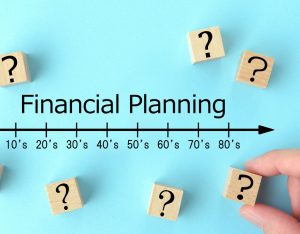Budgets provide you with a roadmap that allows you to prioritize expenses, savings goals, and discretionary spending—in turn easing financial stress and uncertainty. Gather all your income and expense data. Track any monthly recurring costs like rent/mortgage payments, utility bills, or subscription services.
1. Introduction
An effective financial plan can be an essential tool for managing expenses, paying down debts, and meeting savings goals, which contributes to a happier and less stressful lifestyle. Static budgets and forecasts can be dangerously inaccurate. Circumstances change throughout the year, making it nearly impossible to execute accurately on plans based on outdated information.
Integrating budgeting and forecasting into one continuous process requires time, resources, and skills, but the rewards—an agile yet insightful planning process aligned with strategic goals—more than justify these requirements.
2. Priorities and Goals
At the core of any budget is identifying your goals and prioritizing them accordingly, which will allow you to more efficiently utilize both time and resources to meet financial targets more quickly. Separating needs from wants can be challenging, yet essential. Necessities include housing, food, and utilities, while wants can include discretionary spending or savings expenses.
To set priorities and establish goals, the SMART or WOOP techniques may help. No matter which approach is chosen, however, it’s essential that regularly reviewing them ensure they remain pertinent and achievable.
3. Fixed Expenses
Fixed expenses, which remain constant from month to month, make budgeting easy. Examples include rent/mortgage payments, cell phone costs, and subscription services.
To identify your fixed expenses, it’s advisable to review past credit card and bank statements and identify any recurring charges. Deduct these from your income each month; if any are unnecessary or can be reduced or replaced with cheaper alternatives, this way you’ll automatically save without making sacrifices elsewhere—plus it could lead to better financial decisions such as refinancing loans or decreasing utility usage!
4. Variable Expenses
Variable and fixed expenses can make or break an individual’s budget. Fixed expenses remain consistent from month to month, while variable ones fluctuate based on usage and lifestyle choices, such as groceries, gas, and utilities.
Some expenses, like dining out and clothing purchases, can be easily cut through couponing, meal planning, and selecting store-brand items. Travel expenses and entertainment spending, however, can be more challenging. Setting clear financial goals and sticking to them can be immensely helpful here.
5. Cash Flow
Cash flow is the measure of how money moves into and out of a business. This includes both incoming cash, like sales revenue and customer payments, as well as outgoing expenses like loan repayments or capital expenditures. Net income refers to the total cash you make after subtracting business expenses from sales revenue. To determine this figure, review your income statement and classify each source of revenue as operating, financing, or investment revenue streams.
Budgeting and forecasting cash flow is vitally important for businesses of any size. By accurately anticipating and accounting for both short-term and long-term financial needs, they allow you to plan for their fulfillment while helping avoid potential issues before they arise.
6. Budgets and Forecasts
Budgets and forecasts form the cornerstones of financial planning for your business, providing essential short-term goals such as increasing revenues or cutting expenses; long-term objectives include building a debt cushion or entering new markets. An effective budget relies on accurate historical and market trends and should include real results compared with your projected figures to ensure they align with business goals and stay on track.
An effective budget process encourages accountability among departments and fosters a culture of shared financial responsibility for your business’s success, mitigating any unforeseen liabilities such as overly optimistic revenue projections or cost overruns that could arise as a result.
7. Reporting
To create a budget, track your spending for several weeks using whatever tool works for you: an app, spreadsheet, online template, or even pen and paper. This will enable you to visualize where your money is being spent each month as well as identify any savings opportunities.
Make an inventory of all of your expenses, distinguishing between those that are essential (bills) and optional purchases such as monthly music subscriptions. Driving daily could count as essential, while music streaming services would count as extravagances. Once you’ve created a budget, be sure to review it regularly and adjust as necessary—this will keep you on track and allow you to meet your goals!
8. Financial Statements
Financial statements provide a historical view of a company’s performance in key areas like profitability, cash flow, and assets. They typically consist of four main documents: balance sheet, income statement, statement of cash flows, and statement of retained earnings. Net Income of a Company | What Is Net Income? A company’s net income can be defined as the sum total of all its revenue minus expenses and costs during any given period.
Budgeting can help a company effectively control spending, reduce debt, and meet financial goals. Effective budgets involve careful planning and regular review to identify potential liabilities or opportunities that arise within an organization’s resources and drive forecasts and actuals in a predictable way.
9. Conclusions
Budgeting can help individuals maintain control of their spending, prioritize needs, and set financial goals—all key components for reducing debt accumulation due to uncontrolled spending habits. Budgeting may appear daunting at first, yet its many advantages make it worthwhile for some individuals. Budgets don’t need to be restrictive or restrict spending—budgeting allows individuals to pay for basic necessities while simultaneously decreasing expenditure on entertainment or luxury items.
Budgeting is a crucial tool in financial planning, helping individuals gain greater confidence when meeting both personal and professional aspirations. Furthermore, budgeting helps mitigate potential unanticipated challenges by helping people plan expenses and savings accordingly.




